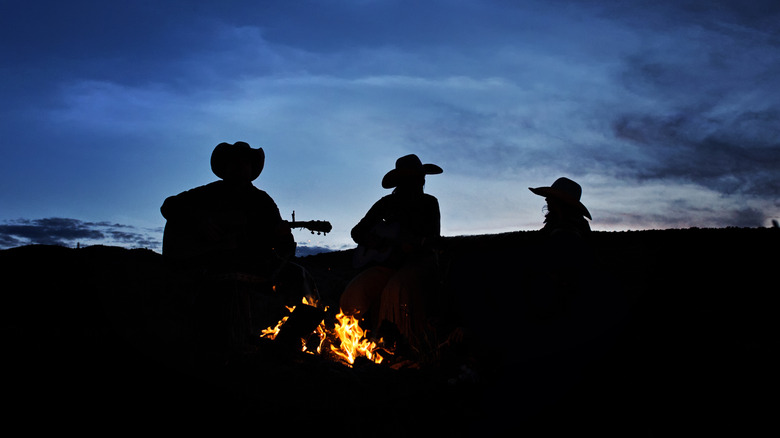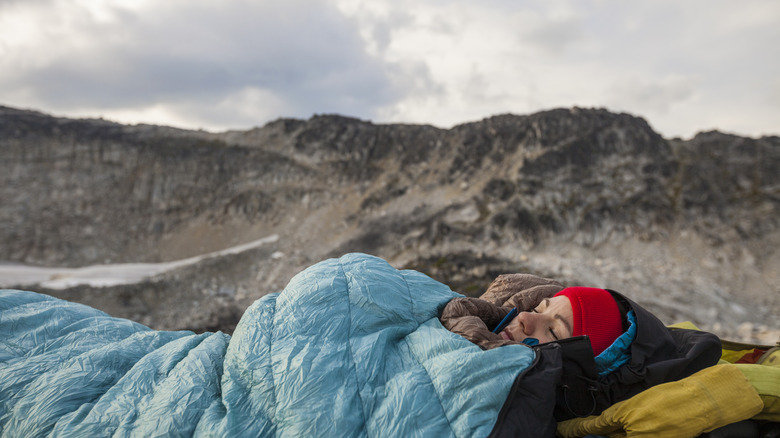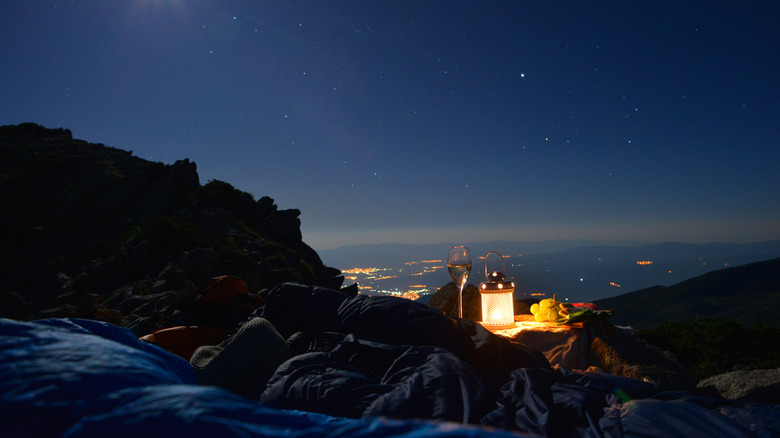Why You Should Give 'Cowboy Camping' In The American Southwest A Try
We may receive a commission on purchases made from links.
It must've been pretty magical to be a cowboy in the Old West, gazing up at the vast and endless stars as you dozed off to sleep on the trail. Or, maybe it was just routine for them. Either way, some modern campers have been seeking to recreate that ultimate rustic experience by practicing "cowboy camping." By doing away with their tents, campers get a fully authentic camping experience, falling to sleep in the great outdoors with nothing but a sleeping bag and rising the next day with the morning sun. By allowing themselves to be at their most vulnerable in the rugged beauty of the wilderness, a transcendental peace can be achieved as the camper wholly immerses themselves in the natural world. While some might consider this practice a little risky, cowboy camping can be easily pulled off with some planning and preparation.
Location is key in the decision of whether or not to cowboy camp. Spots to avoid would be overly wet places, as the likelihood of running into a stray rain shower or being bothered by bugs is substantially higher. True to its name, the sprawling deserts in the American Southwest are actually the perfect place to attempt cowboy camping, with fewer bugs, more predictable weather patterns, and flatter surfaces. The Lost Dutchman State Park in Arizona might provide ample opportunities for cowboy camping, and one should also look into the best national parks in America for camping, particularly those located in Utah, New Mexico, and Nevada. However, some essential gear absolutely must still be brought along.
Be sure to bring along the few essentials needed for cowboy camping and emergencies
Because cowboy camping doesn't involve a tent at all, anyone hoping to practice this camping style should certainly invest in a waterproof, temperature-appropriate, and well-cushioned sleeping bag. Look for a high-quality option like Therm-a-Rest Space Cowboy Sleeping Bag that is capable of retaining warmth in colder conditions or a closed-cell foam sleeping pad for laying down on rougher terrain. If you're using an inflatable pad instead, also bring a groundsheet made of polycryo as a cushion underneath.
Tents are most practical in protecting the camper from inclement weather, but this, too, can be worked around. A bivy, which is a sack-like cover usually used by mountain climbers, works wonders in protecting the camper from bugs and light rain. You can find a variety of bivys for purchase from retailers such as REI and Campmor or invest in this Outdoor Research Helium Bivy from Amazon.
Truthfully, the safety difference between sleeping with a tent and sleeping without one in the wilderness is minuscule. Though the feeling of being zipped up inside a tent might give the camper a false sense of security, in reality, tents offer little in the way of protection against outdoor woodland creatures. If anything, tents attract more attention to the campsite, and as long as your food is properly stowed away, animals like snakes, bugs, and bears have hardly any interest in interacting with humans. Still, bringing along a tent, just in case, is probably for the best, as the conditions for cowboy camping do have to be just right.
Make sure the weather will be ideal and that you are psychologically ready
Being caught out in a storm while camping is no joke, so it's best to plan ahead by thoroughly checking weather forecasts in advance of your trip in order to avoid nasty weather. Weather tracking devices can provide the camper with crucial data like incoming weather reports at the sight of dark clouds or pathways provided by GPS back to the campsite — the Garmin inReach Mini 2 Satellite Communicator is a good all-in-one solution. One way to avoid getting rained on while cowboying is to wrap yourself up in your foam pad or to look for a nearby tree or rock wall to protect at least one side of yourself. However, finding a breezier spot for cowboying is always preferred as it can help keep bugs away.
Those who think that cowboy camping sounds a bit too intense for them should probably just opt out and stick to what feels comfortable. Keeping a cool head out in the untamed landscape is crucial not only for personal enjoyment but for safety's sake. It's always good to brush up on the essentials of camping, especially if going out solo. But confronting your fears and allowing yourself to be embraced by the Earth can be a transformative experience for some. There are few better ways to get a full picture of the immense beauty that most of us tethered to the modern world tend to take for granted — any self-respecting cowboy could tell you that.


